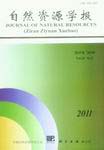Special Column:Celebration of the 70th Anniversary of IGSNRR, CAS
WANG Chuan-sheng, SUN Gui-yan, SUN Wei, FAN Jie
Slope settlement is an important type of mountain settlement. From the perspective of regional development, the slope settlement is always related to mountain settlement with poor ecological and backward economic conditions, as well as the major region for shaking off poverty of the country. As the state functional planning is put into practice, it is very important to fully recognize these problems, such as ecology, poverty, re-settlement, population relocation and so on. The paper took Zhaotong as a study area to adequately explore the spatial characteristics of slope-type settlements and analyze the mechanism from the perspective of regional development. This not only increased the case of mountain settlement study, but also provided some references for construction of residential environment, rural population movement, migration and so forth.The paper revealed the spatial characteristics of slope settlement in Zhaotong by using 50 m grid terrain data in 2005, 1 ∶100000 topographic map, remote sensing data of land use in 2000, and GIS spatial analysis. The result showed that slope-type settlements in Zhaotong had five distinctive features such as high proportion, high density, scattered layout, high intensity of human activities, and vertical differentiation of national settlements. Besides, from the perspective of regional development, the paper also analyzed the formation mechanism of slope settlement in Zhaotong, and found that the spatial distribution of slope settlements was the result of many factors. Firstly, the steep terrain was the natural background of the development of slope settlements. Secondly, it gathered a lot of people in the historical period, while the topography restricted the improvement of traffic condition, thus limiting the local population to foreign exchange and diffusion. Thirdly, traditional farming industry brought about long-term stable growth of population, which led to high density, decentralized development. Finally, the above-mentioned conditions hindered the process of industrialization and urbanization, which increased the difficulty of reasonable allocation of slope settlements, leading to the co-existence of decentralized and high density, high slope and high intensity of human activities.In conclusion, objectively, the spatial distribution of slope settlements was affected by natural and geographical conditions in Zhaotong, but the fact could not be ignored that irrational regional development and inappropriate regional development path were also the important causes, which not only resulted in worsening slope settlement habitats, but also turned them into the urgent problem of regional development in Zhaotong.
